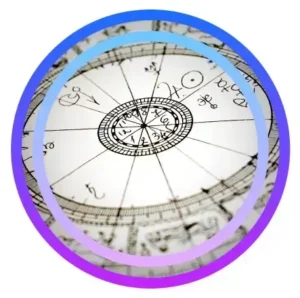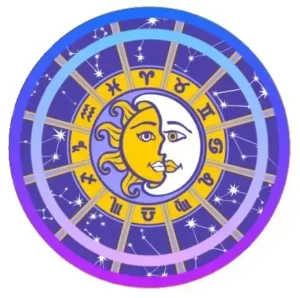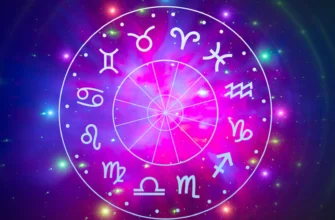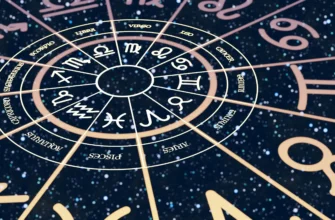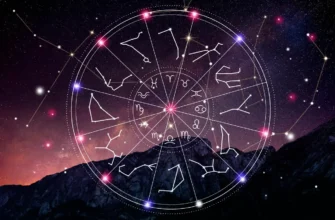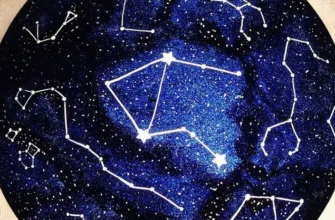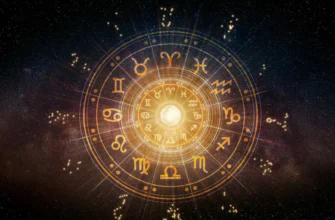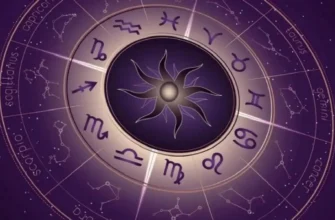Some relationships feel familiar from the very first moment, as though you’ve known the person forever. Past life synastry explores these deeper connections by analyzing karmic aspects, Node contacts, and planetary alignments that point to shared history. In karmic relationship astrology, aspects to the South Node, Saturn, Pluto, and the Vertex often indicate unresolved themes from previous incarnations.
Through synastry chart interpretation, these placements reveal why certain relationships accelerate emotional growth, trigger old wounds, or feel impossible to walk away from. In relationship synastry, karmic indicators highlight lessons about trust, responsibility, power, or forgiveness that the partners came into this lifetime to resolve. Such relationships can be transformative—even if they are temporary—because they change the trajectory of both individuals. In synastry chart analysis, past-life markers explain why emotional intensity, attachment, or conflict appears instantly. These connections are less about comfort and more about purpose: completing unfinished soul contracts and opening the door to deeper self-understanding.
The realm of synastry astrology offers profound insights into the mysterious connections that bind souls across lifetimes. When two individuals meet and experience an inexplicable sense of familiarity, as though they’ve known each other forever, synastry chart analysis can reveal the deeper cosmic reasons behind these encounters. Past life astrology examines specific planetary placements, aspects, and sensitive points within relationship charts that indicate karmic ties and soul contracts formed long before the present incarnation. Understanding these astrological signatures helps illuminate why certain relationships feel destined, intense, or seemingly impossible to walk away from, even when logic suggests otherwise.
Understanding Karmic Connections Through Synastry Analysis
Certain relationships carry an unmistakable quality of destiny. The moment two people meet, an instant connection sparks—a recognition that transcends ordinary attraction. This profound feeling of familiarity points toward something deeper than present-life circumstances. Synastry, the astrological technique of comparing two birth charts, provides a roadmap for understanding these soul-level connections and identifying whether past life bonds exist between individuals.
Synastry chart interpretation reveals how planetary energies interact between two people, highlighting areas of compatibility, challenge, and karmic entanglement. When analyzing charts for past life indicators, astrologers examine specific celestial bodies, mathematical points, and house placements that carry karmic significance. These astrological markers suggest that two souls have traveled together through previous incarnations, bringing unfinished business, karmic debts, or evolutionary lessons into the current lifetime.
Past life connections identified through synastry can manifest as deeply supportive and loving relationships, though they may also bring challenging lessons that both individuals must navigate together. The nature of the planets involved determines whether the karmic bond serves growth and healing or whether it perpetuates difficult patterns that require conscious effort to transform. Often, when karmic debt exists between souls, specific indicators appear prominently in the synastry comparison, revealing the underlying dynamics at play.
Karmic relationships carry the potential to become burdensome if the lessons remain unrecognized or if debts go unpaid. However, these connections also offer tremendous opportunities for spiritual evolution and soul growth. Venus retrograde in the natal chart frequently indicates an individual prone to karmic romantic entanglements, particularly when this placement involves karmic houses such as the eighth or twelfth. Birth chart analysis of both individuals provides essential context for understanding the synastry dynamics and the likelihood of past life connections.
Primary Indicators of Past Lives in Synastry
The Lunar Nodes: Gateways to Past and Future
In natal astrology, the lunar nodes—the North Node and South Node—form an axis representing the soul’s evolutionary journey. The North Node points toward future growth and lessons to be mastered in this lifetime, while the South Node reveals past experiences, ingrained patterns, and skills developed through previous incarnations. When analyzing synastry for past life connections, aspects between one person’s planets and another’s nodes carry profound karmic significance.
South Node synastry aspects serve as the most direct indicators of shared past lives. When someone’s personal planets—particularly the Sun, Moon, Mercury, Venus, or Mars—form conjunctions with another person’s South Node, this configuration strongly suggests previous encounters between these souls. The attraction between individuals with these aspects often feels magnetic and instantaneous, as though picking up an unfinished conversation from centuries ago. These connections can indicate any type of relationship from the past, not necessarily romantic partnerships, though the nature of the planets involved offers clues about the relationship’s character.
North Node connections in synastry indicate relationships that serve evolutionary purposes in the current lifetime. When one person’s planets activate another’s North Node, that individual helps guide their partner toward their destined path and soul growth. While these aspects may not point directly to past life connections, they suggest karmic timing and purposeful meetings orchestrated by the universe.
The house placements of the lunar nodes in both individuals’ charts reveal which life areas carry karmic weight and where new lessons must be learned. Particular attention should be paid when the nodes fall in relationship houses, especially the seventh house of partnerships. Aspects between one person’s nodes and another’s Ascendant-Descendant axis also serve as past life indicators, suggesting that these souls agreed to meet again to fulfill specific purposes.
The Vertex: The Point of Fated Encounters
The Vertex, often called the “third angle” of a birth chart, operates as a sensitive point associated with fated encounters and destined relationships. Located in the western hemisphere of the natal chart, where the prime vertical intersects the ecliptic, the Vertex activates during significant relationship turning points and life-changing meetings. In synastry analysis, aspects to the Vertex reveal karmic attractions and soul-level recognition.
When one person’s planets or angles form conjunctions with another’s Vertex, an undeniable pull draws these individuals together. The Vertex conjunct Ascendant synastry aspect appears frequently in romantic partnerships, indicating that the relationship serves an important evolutionary purpose. These connections often arrive at crucial life junctures, catalyzing profound personal transformation and redirecting the soul’s trajectory.
Transiting or progressed planets activating the natal Vertex frequently coincide with relationship changes, new romantic encounters, or the revival of past connections. The Vertex doesn’t operate through conscious will but rather through synchronicity and divine timing, bringing people together when the universe determines the moment is right.
Connections between the Vertex and the lunar nodes in synastry carry particularly strong karmic implications. These configurations suggest that both the past (South Node) and future (North Node) converge in the relationship, creating opportunities to resolve old patterns while simultaneously moving toward evolutionary growth. Vertex synastry aspects indicate relationships that feel predestined and unavoidable, often arriving unexpectedly and changing life’s direction permanently.
Saturn: The Cosmic Taskmaster of Karma
Saturn reigns as astrology’s primary significator of karma, life lessons, and the consequences of past actions. Known as the taskmaster planet, Saturn brings structure, discipline, limitation, and sometimes hardship into areas it touches. In synastry, Saturn aspects between charts signal karmic connections that carry serious weight and demand maturity from both individuals.
Saturn synastry aspects indicate relationships containing important karmic lessons and often past life connections. To fully understand Saturn’s influence in relationship dynamics, astrologers examine its zodiac sign, house placement, and the specific aspects it forms with the other person’s planets. Saturn contacts to the lunar nodes carry especially powerful karmic significance, suggesting debts that must be repaid or lessons that must be learned through the relationship.
Any Saturn aspect to personal planets—Sun, Moon, Mercury, Venus, or Mars—can make the past relevant in a relationship. Saturn conjunct the South Node in synastry represents one of the strongest past life indicators, suggesting that these souls have encountered each other before and carry unresolved karma into the present incarnation. The Saturn person often plays the role of teacher, authority figure, or karmic agent in the relationship, bringing structure and reality checks that the other person needs for growth.
However, Saturn’s energy doesn’t always manifest pleasantly. This planet brings coldness, restriction, and frustration alongside its gifts of commitment and longevity. While harmonious Saturn aspects (trines and sextiles) can indicate stable, long-lasting bonds built on mutual respect and shared responsibility, challenging aspects (conjunctions, squares, and oppositions) may create feelings of burden, limitation, or emotional distance. Saturn in relationship synastry often appears prominently in the charts of married couples, as this planet governs time, permanence, and lasting commitments.
Difficult Saturn contacts between personal planets serve as potential warning signs, especially when the synastry lacks supportive, nurturing aspects to balance Saturn’s severity. Relationships under heavy Saturn influence may feel like obligations rather than joyful partnerships, though they serve important purposes for soul development and karmic resolution.
Individuals with natal Saturn in the seventh house of partnerships tend to attract karmic relationships throughout life. Similarly, Saturn in the fifth house of romance can manifest as serious, karmic love affairs, with romantic life typically improving significantly after the Saturn return (around age 29-30). Other challenging outer planets like Pluto in these houses can produce similar karmic relationship patterns.
The Twelfth House: Portal to Hidden Karma
The twelfth house occupies a special place in astrological chart interpretation as the house of hidden matters, the unconscious mind, spiritual transcendence, and karma itself. As the final house in the zodiac wheel, the twelfth house represents the culmination of all previous experiences and the dissolution of ego boundaries. Planets placed in the twelfth house operate beneath conscious awareness, influencing life in subtle, often mysterious ways that only reveal themselves through time and reflection.
In synastry, twelfth house overlays carry profound karmic implications. When one person’s planets fall in another’s twelfth house, past life connections become highly likely. The nature of the planets involved determines what lessons the relationship brings and what karmic debts require attention. Romantic planets such as Venus, Mars, or Lilith appearing in the partner’s twelfth house suggest past romantic or sexual entanglements between these souls, bringing both intense attraction and complex psychological dynamics into the current relationship.
The twelfth house in composite charts (the blended chart created by midpointing two individual charts) also illuminates karmic relationship dynamics, though synastry provides more detailed information about how each person’s energy affects the other. Twelfth house synastry often creates relationships that feel secretive, hidden, or somehow separate from ordinary life. These connections may involve sacrifice, service, or working through unconscious patterns that both individuals carry from previous lifetimes.
Beyond the twelfth house, the sixth and eighth houses also carry karmic significance in relationship astrology. The sixth house relates to daily service, health, and work routines, while the eighth house governs shared resources, transformation, sexuality, and psychological depth. The fourth house represents family karma and ancestral patterns passed down through generations. Planetary overlays in these houses can indicate karmic ties, though the twelfth house remains the most significant for identifying past life connections.

Secondary Karmic Indicators in Synastry
Juno: The Marriage Asteroid
Juno, named after the Roman queen of the gods and wife of Jupiter, serves as the primary asteroid associated with marriage, committed partnerships, and the qualities one seeks in a life partner. In Roman mythology, Juno presided over marriage ceremonies and protected married women, making her astrological counterpart deeply relevant for relationship analysis. Positioned between Mars (the lover) and Jupiter (the husband) in the asteroid belt, Juno bridges romantic passion and committed partnership.
In synastry, Juno aspects indicate soul contracts related to marriage and long-term commitment. Juno conjunct another person’s Ascendant or Descendant suggests a powerful marriage potential and possibly a past life marriage between these souls. When Juno forms conjunctions with personal planets—especially the Sun, Moon, or Venus—the relationship carries marital themes and may fulfill a karmic agreement made between souls before incarnation.
Juno’s house placement in synastry provides additional information about past life connections. When one person’s Juno falls in another’s twelfth house, or vice versa, this configuration points toward hidden karmic bonds related to marriage or commitment. The relationship may involve sacrifice, spiritual service, or the completion of unfinished marital karma from previous lifetimes.
Aspects between Juno and the South Node in synastry represent clear past life marriage indicators. These configurations suggest that two souls were once bound by marriage vows or similar commitments and have reunited in the current incarnation to continue their journey together or resolve outstanding issues. While conjunctions carry the strongest influence, all Juno aspects deserve consideration in comprehensive synastry analysis.
Chiron: The Wounded Healer
Chiron, the “wounded healer” of astrology, represents deep soul wounds, healing journeys, and the transformation of pain into wisdom. In synastry, Chiron contacts between charts indicate relationships that trigger old wounds while simultaneously offering opportunities for profound healing. These connections often carry karmic significance, as the wounds Chiron represents frequently originate in past life experiences or early childhood traumas that echo past life patterns.
When one person’s Chiron touches another’s personal planets or angles, the relationship becomes a healing journey for both individuals. The planet person may unconsciously trigger the Chiron person’s deepest vulnerabilities, bringing suppressed pain to the surface where it can finally be addressed and healed. Though initially uncomfortable, Chiron synastry aspects serve important evolutionary purposes and often indicate that these souls agreed to help each other heal before incarnating.
The Nature of Karmic Relationships
Understanding Karma Beyond Good and Bad
Karma, derived from the Sanskrit word meaning “action” or “deed,” operates as a universal principle of cause and effect rather than a system of punishment and reward. Importantly, karma itself is neutral—neither inherently good nor bad—simply ensuring that every action generates corresponding consequences that eventually return to the actor. This principle enables souls to learn through direct experience of their choices and behaviors across multiple lifetimes.
Karmic relationships function according to this same principle. They can manifest as deeply supportive, loving partnerships that reward past positive actions, or as challenging, restrictive bonds that require individuals to experience consequences of previous harmful behaviors. Natal chart analysis reveals whether someone is likely to attract harmonious karmic relationships as rewards or difficult partnerships that serve as vehicles for repaying karmic debts and learning essential lessons.
The essence of karma is inherently Saturnine in nature: results take time to manifest, sometimes spanning multiple lifetimes before balancing occurs. This delayed reaction ensures that souls have opportunities to learn and grow through experiencing the full consequences of their actions, whether positive or negative. Patience, maturity, and conscious awareness help individuals navigate karmic relationships more effectively and accelerate the resolution of outstanding karmic debts.
The Challenging Reality of Karmic Bonds
Despite their romantic appeal, karmic relationships often become sources of pain and restriction rather than joy and freedom. These connections arrive bearing important life lessons necessary for soul evolution, but the teaching methods frequently involve hardship, disappointment, and emotional difficulty. The cold, limiting nature of Saturn, which governs karma, can cause initial passion to fade quickly, leaving partners feeling trapped in relationships that no longer serve their happiness.
Karmic relationship dynamics typically follow a predictable pattern. Initially, everything seems perfect—the attraction is magnetic, the chemistry undeniable, and both individuals feel they’ve found their soulmate or twin flame. However, as time passes, the challenging nature of the connection gradually reveals itself. Communication becomes frustrating and unproductive, mutual understanding deteriorates, and the relationship transforms into a love-hate dynamic lacking the tenderness and emotional safety required for long-term success.
Couples bound by heavy karmic ties often find themselves unable to separate despite recognizing the relationship’s dysfunction. Some invisible force keeps them returning to each other, replaying the same painful patterns without resolution. Those trapped in karmic relationships may fail to recognize warning signs of unhealthy dynamics or potential abuse, as the karmic bond clouds judgment and creates addictive attachment patterns.
When karmic romantic relationships progress to marriage or parenthood, challenges typically intensify after significant commitments are made or children are born. The karmic lessons become unavoidable at this stage, forcing both individuals to confront the underlying issues that brought them together. Karmic relationships impact life holistically: some people experience career setbacks, others face health deterioration, while still others must navigate family challenges as consequences of the karmic entanglement.
Breaking Free and Transforming Karma
Recognition represents the crucial first step toward transforming karmic relationship patterns. Awareness of the karmic nature of a connection empowers individuals to make conscious choices rather than unconsciously repeating past life patterns. Understanding which synastry aspects indicate karmic bonds helps people see their relationships more objectively and determine whether staying serves their highest good or whether separation offers the path to growth.
Fortunately, karmic relationships need not last forever—a blessing given their often restrictive nature. While some karmic connections require years or even decades to resolve, conscious awareness and deliberate effort toward learning the embedded lessons can accelerate karmic debt repayment. The sooner individuals recognize and embrace the lessons their relationships offer, the sooner they can complete the karmic contract and move forward with greater freedom.
Existing relationships can also be transformed through awareness and conscious work. Partners who recognize the karmic nature of their bond can choose to approach their challenges as opportunities for mutual growth rather than as evidence of incompatibility. Therapy, spiritual practices, and honest communication help couples navigate karmic lessons together, potentially transforming a difficult relationship into a vehicle for profound healing and evolution.
The key to working with karmic relationship astrology lies in bringing unconscious patterns into conscious awareness. Once both individuals understand the deeper dynamics at play, they can make empowered choices about how to proceed—whether that means committing to doing the difficult work together, setting healthier boundaries within the relationship, or consciously completing the karmic contract and parting ways with grace and gratitude for the lessons learned.
Conclusion
Synastry chart analysis offers invaluable insights into the karmic underpinnings of intimate relationships and soul connections that span multiple lifetimes. By examining planetary aspects, house overlays, and sensitive points like the lunar nodes, Vertex, and karmic planets, astrologers can identify past life indicators and help individuals understand why certain relationships feel so intense, destined, or difficult to escape.


